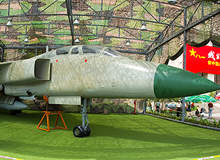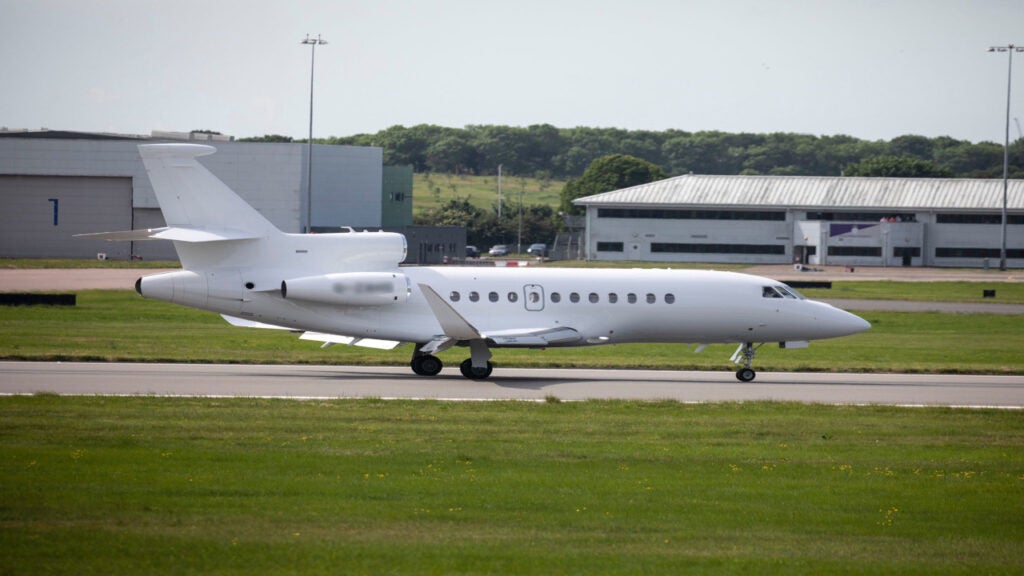
Xian JH-7 or Jian Hong-7 is a twin engine, lightweight fighter bomber aircraft designed and manufactured by Xian Aircraft Industry Corporation, China to meet the requirements of People’s Liberation Army Navy (PLAN) and People’s Liberation Army Air Force (PLAAF). Its NATO reporting name is Flounder. It was built to replace the Chinese ageing fleet of Harbin H-5 and Nanchang Q-5 aircraft.
The export version of two seat JH-7 fighter is known as the FBC-1 (Fighter Bomber China-1) Flying Leopard. The maiden flight was completed in December 1988 and the aircraft entered into service in 1992. About 70 JH-7 aircraft are currently operational worldwide. The aircraft can operate day and night in all weather conditions.
JH-7 fighter bomber variants
The JH-7 fighter bomber has four variants namely JH-7A, JH-7B, FBC-1 Flying Leopard and FBC-1A Flying Leopard II.
The JH-7A is an upgraded version of the original JH-7 aircraft. JH-7A is the first aircraft designed with CAD or CAM CATIA V.5 software. This variant is additionally equipped with digital fly by wire controls, ventral fins, a glass cockpit and a single piece windscreen. The number of hard points in the variant is increased to 11.
The JH-7B is an advanced version of JH-7A. It has stealthier features compared to JH-7A.
FBC-1 Flying Leopard is an export version of JH-7. It was unveiled in 1998 and features a helmet mounted sight, a glass cockpit and user defined radars.
FBC-1A Flying Leopard II is an export version of JH-7A and was unveiled to the public in September 2003. This variant features 11 hard points which can carry 9,000kg of external stores.
Orders and deliveries
The JH-7 was delivered to the PLANAF in 1990. Xian Aircraft Industry Corporation supplied 20 JH-7s to the PLANAF in 1992. The PLAN acquired 20 more aircraft between 2002 and 2004 upon completion of the aircraft’s final design in 1998.
Development
The proposal to develop a new fighter bomber was submitted to the Ministry of Aeronautics (MoA) by the People’s Liberation Army in 1970. Two different variants of single airframe were proposed by Xian Aircraft Industry Corporation to cater to the needs of both PLAAF and PLAN. The air force variant was dropped in 1980 while the naval variant was built to execute anti-ship missile strike missions. The full scale production of original JH-7 began in 1984. The first JH-7 prototype was rolled out in August 1988 and unveiled to the public in September 1988 at Farnborough International Air Show.
The first batch of 12 to 18 JH-7 aircraft was delivered to both PLNAF and PLAAF for evaluation in the 1990’s. The PLAAF declined to acquire JH-7 due to its old technology and unreliable Spey turbofan engines. The air force finally agreed to procure aircraft after upgrading the avionics and weapons suite with state-of-the-art technology. The upgraded JH-7 is known as JH-7A and was delivered to PLAAF in 2004.
Cockpit
The aircraft incorporates a two seat tandem cockpit and fuel tanks. The cockpit accommodates a pilot and a weapons load officer and is protected by armour plates. The back seat is reserved for the weapons load officer and is fitted slightly higher than front seat to provide clear visibility of the battlefield. Each seat has its own back-hinged canopy.
Armaments
The JH-7 or FBC-1 is armed with a single 23mm twin-barrel GSh-23L auto cannon, which can fire 300 rounds per gun.
The aircraft has nine hard points of which six are located under wing, two beneath wing tips and one under the centreline fuselage section. It can carry 9,000kg of payload.
It is also equipped with PL-5, PL-8 and PL-9 air to air missiles (AAM), Yingji-8K, Yingji-82K anti-ship missiles (ASM) and Yingji-91 anti-radiation missile (ARM). The aircraft is fitted with 57mm or 90mm unguided rocket pods, and unguided and laser guided bombs.
Radars
The JH-7 is equipped with Type 232 H Eagle Eye multi-function fire-control radar, which tracks target information of YJ-8 (C-801) subsonic anti-ship missiles from a maximum distance of 70km to 100km. It also offers fixed air to air and navigation capabilities. The radar cannot operate on land due to its deficiency of terrain and precision strike abilities.
Countermeasures
The aircraft features an electronic countermeasures suite which encompasses Information Friend of Foe (IFF) transponder, radar warning receiver (RWR), noise jammer, and KZ-8608 electronic intelligence (ELINT) suite, chaff or flare dispensers.
Engines
The JH-7 is powered by two Rolls-Royce Spey Mk202 turbofan engines. Each engine can produce 54.29kN of dry thrust and its thrust after burner is 91.26kN.
The engine is 5.2m long. Its diameter is 1.09m. The dry weight of the engine is 1,856kg.
The Spey Mk202 engine was introduced in 1960. The engine was first received by China in 1975.
China signed an agreement with Rolls Royce in 1975 to reproduce the Spey Mk202 engine through reverse engineering.
The Chinese produced engine is designated as WS-9 Qinling turbofan engine and its trail production began in 1976. The WS-9 incorporated in the JH-7A aircraft is a licensed copy of the Spey Mk202 engine.
Performance
The aircraft can fly at a maximum speed of 1,808km/h. Its cruise speed is 903km/h. The normal and ferry ranges of the JH-7 are 1,759km and 3,700km respectively. The service ceiling of the aircraft is 16,000m. The aircraft weighs around 14,500kg while its maximum take-off weight is 28,475kg.




